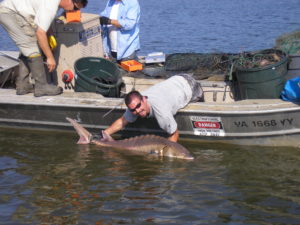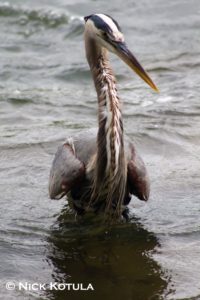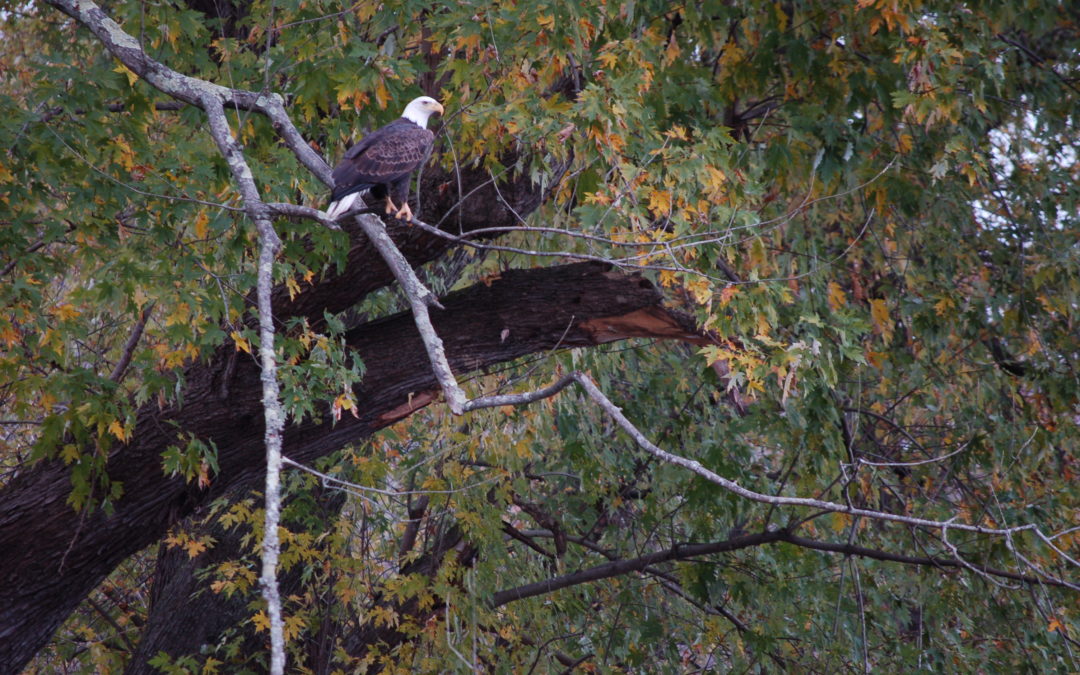Despite pollution and habitat loss, populations of some James River species have begun to rebound. Legislation beginning with the Clean Water Act of 1972 and restoration efforts by many organizations have contributed to these great returns.
Atlantic Sturgeon
Regarded as a “living fossil,” the Atlantic sturgeon’s appearance has changed little since the age of the dinosaurs. Capable of growing up to 14 feet in length, weighing 800 pounds, and living up to 60 years, they spend their adult years in the Atlantic Ocean. Each spring and fall they return to spawn in the water of the James River where they were born. Commercial harvesting decimated the Atlantic sturgeon population in the late 1800’s. The greatest threats to the endangered Atlantic sturgeon’s survival are boat propellers, by-catch in commercial fisheries, and sediment pollution that blankets spawning habitat on the bottom of the river. Three experimental spawning reefs have been constructed in the James River below Richmond to help restore this incredible fish.
 Bald Eagle
Bald Eagle
In 1977, there were only 33 pairs of bald eagles in Virginia, none of which resided in the James River watershed. Since then, bald eagles have made an incredible return. In 2015, 236 breeding pairs were documented during an aerial survey conducted by The Center for Conservation Biology. Seeing a bald eagle soaring above the James River is no longer a rare event, thanks to t
he ban of the agricultural insecticide DDT in 1972 and the passage of the Endangered Species Act in 1973.

Great Blue Heron
Similar to the population of bald eagles, the great blue heron population of the Chesapeake Bay region has increased dramatically since the late 1960s when the population reached an all-time low. The steep population decline is attributed to the widespread use of the agricultural insecticide DDT, which was banned in 1972. Since then, the great blue heron population has rebounded, and the number of breeding colonies has increased from a dozen to 407, according to a 2013 survey conducted by The Center for Conservation Biology.

